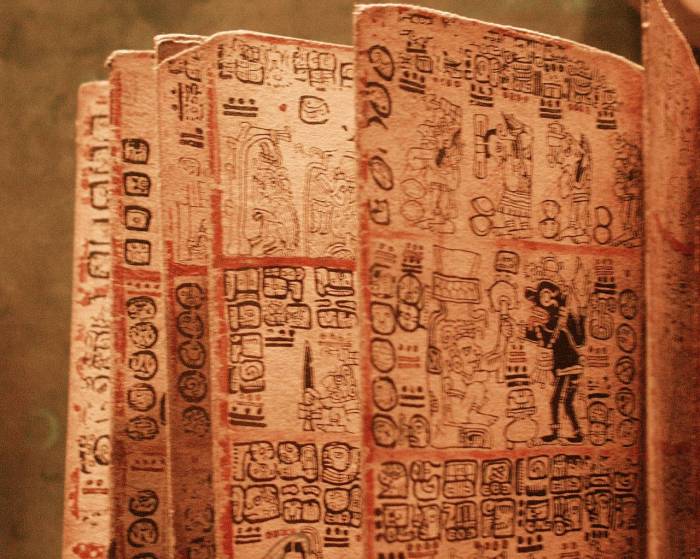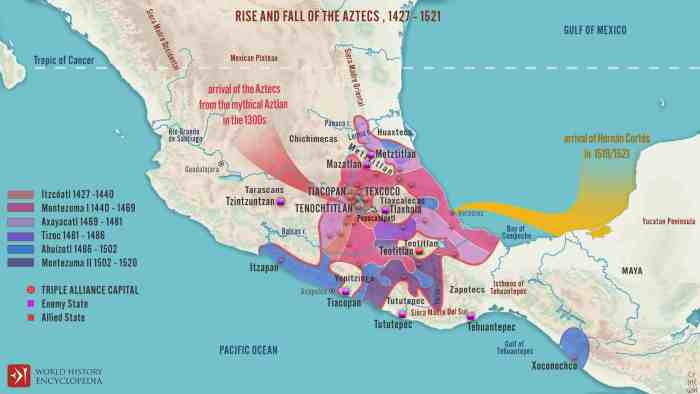As the Mayan and Aztec civilizations advanced the development of mathematics, architecture, and more, they left an indelible mark on the world. Their innovations and achievements continue to captivate and inspire scholars and laypeople alike. This comprehensive exploration delves into the remarkable contributions of these ancient civilizations, shedding light on their profound impact on human history.
From the intricate Mayan number system and calendar to the awe-inspiring Aztec pyramids, the Mayan and Aztec civilizations showcased their ingenuity and creativity in every aspect of their societies. Their agricultural practices, social structures, and artistic expressions all played a vital role in shaping the development of Mesoamerica and beyond.
Mathematics and Astronomy
The Mayans and Aztecs developed sophisticated mathematical and astronomical systems that played a vital role in their societies.
Number Systems
- The Mayans used a vigesimal (base-20) number system with a place value notation, including the concept of zero.
- The Aztecs used a decimal (base-10) number system, also with a place value notation.
Calendars
- The Mayan Long Count calendar was an incredibly accurate calendar system that spanned thousands of years.
- The Aztec calendar system consisted of a 365-day solar calendar and a 260-day ritual calendar.
Astronomical Observations
- The Mayans and Aztecs observed celestial bodies such as the sun, moon, and planets, and recorded their movements with great precision.
- These observations allowed them to predict eclipses, solstices, and other astronomical events.
Architecture and Engineering

The Mayans and Aztecs were skilled architects and engineers who constructed impressive structures that showcased their ingenuity and creativity.
Architectural Styles
- Mayan architecture is characterized by pyramids with steep sides and elaborate carvings.
- Aztec architecture is known for its massive temples, palaces, and aqueducts.
Construction Techniques
- Both the Mayans and Aztecs used corbelled vaults to create archways and roofs.
- The Mayans developed a system of stucco plastering to cover and decorate their buildings.
- The Aztecs employed a technique called chinampas, which involved creating artificial islands for agriculture.
Engineering Achievements
- The Mayans built extensive water management systems, including canals and reservoirs.
- The Aztecs constructed a sophisticated road network that connected their empire.
Agriculture and Food Production

Agriculture was the foundation of Mayan and Aztec societies, and they developed innovative techniques to sustain their populations.
Agricultural Practices
- The Mayans and Aztecs cultivated a variety of crops, including maize, beans, and squash, known as the “Three Sisters.”
- They used slash-and-burn techniques to clear land for farming.
- They practiced irrigation and terracing to increase crop yields.
Food Preservation Techniques
- The Mayans and Aztecs preserved food through methods such as drying, smoking, and fermentation.
- These techniques allowed them to store food for extended periods, especially during times of scarcity.
Social and Political Structures

The Mayans and Aztecs had complex social and political hierarchies that governed their societies.
Social Hierarchies
- Mayan society was divided into classes based on occupation and wealth.
- Aztec society was also divided into classes, with the nobility at the top and slaves at the bottom.
Political Systems
- The Mayans had a decentralized political system, with each city-state ruled by its own king.
- The Aztecs had a centralized political system, with the emperor ruling over a vast empire.
Role of Religion and Warfare, The mayan and aztec civilizations advanced the development of
- Religion played a central role in both Mayan and Aztec societies.
- Warfare was an important aspect of Aztec culture, and they conquered vast territories.
Art and Culture: The Mayan And Aztec Civilizations Advanced The Development Of

The Mayans and Aztecs produced a rich and diverse range of artistic and cultural expressions.
Artwork
- Mayan art includes intricate sculptures, ceramics, and codices.
- Aztec art is characterized by monumental sculptures, murals, and jewelry.
Symbolism and Cultural Significance
- Mayan and Aztec art often depicted religious themes, historical events, and cultural practices.
- The symbolism in their artwork conveyed important messages about their beliefs and values.
Music and Dance
- Music and dance were integral parts of Mayan and Aztec cultures.
- They used a variety of instruments, including drums, flutes, and rattles.
FAQ Corner
What were the key features of the Mayan number system?
The Mayan number system was a vigesimal (base-20) system that utilized a combination of bars and dots to represent numbers. It was remarkably sophisticated and allowed for complex mathematical calculations.
How did the Mayan and Aztec calendars compare?
Both the Mayan and Aztec calendars were highly accurate and complex. The Mayan calendar consisted of three interlocking cycles: the Long Count, the Tzolkin, and the Haab. The Aztec calendar was a solar calendar with 365 days divided into 18 months of 20 days each, plus 5 unlucky days.
What were some of the most impressive architectural achievements of the Mayan and Aztec civilizations?
The Mayans were renowned for their towering pyramids, intricate temples, and sophisticated urban planning. The Aztecs constructed massive palaces, temples, and causeways, including the iconic Templo Mayor in Tenochtitlan.